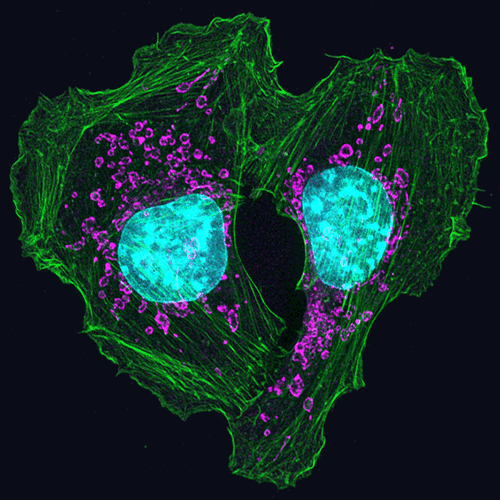
This heart-shaped image shows two mouse skin cancer cells connected to each other with actin, a protein that is part of the cellular skeleton. Researchers use mouse cells like these to tease out the molecular methods that cancer uses to invade new tissues in the body. It turns out that actin plays an essential role.
Cells can move as a collective, or independently. Movement of an individual cell requires a series of carefully controlled steps. Among them, a cell must break contacts with its neighbor cells and change its connections to the proteins and fibers around it. In addition, it must sense and follow a chemical path through the tissue it lies in. To do this, a cell changes shape, molding its membrane into flaps or feet called protrusions reaching in the direction it is traveling. Actin, among a variety of other molecules, is involved in all of these steps, but especially the shape change, when it gathers inside the cell membrane to help form the protrusions.
Cancer cells seem adept at hijacking this orchestrated system and using it to first detach themselves from the original tumor, then travel through surrounding tissues and reach the blood, where the cells can disperse throughout the body and invade other organs to start new tumors. Scientists searching for ways to disrupt this overall process without harming normal cells study the proteins involved in every step, looking for unusual proteins or patterns that might prove useful as targets for new medicines.
Actin itself is integral to too many cellular processes to make a good target, but the molecules that regulate actin dynamics during cell movement—or maybe even master molecules that are higher in the chain of command—could prove more useful. Researchers can identify differences in actin regulation between normal and cancerous cells to help clarify the best approaches to treatment.
This image is one of many stunning scientific images in our Life:Magnified collection.
More Biomedical Beat Stories


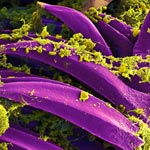
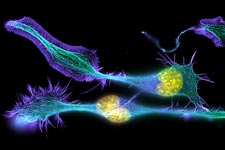
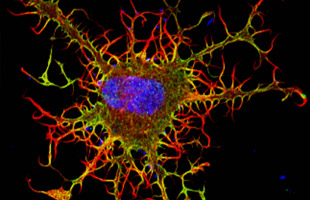
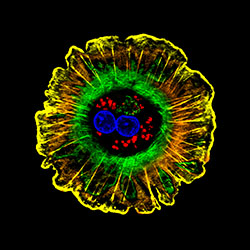
Congratulations for this extremely interesting article. As coordinator from a Interuniversity research group working on in the domain of proteins and postulate that proteins from the cancer cells are different from the proteins in not cancer cells and this event is probably due to the influence of physical forces?
May I ask you to concider this information as a secret information , because as researcher we know that we should respect the secret of a postulation
Glad you enjoyed the post. Not sure what you mean about keeping it secret. NIGMS is pleased to share this information with whomever is interested.